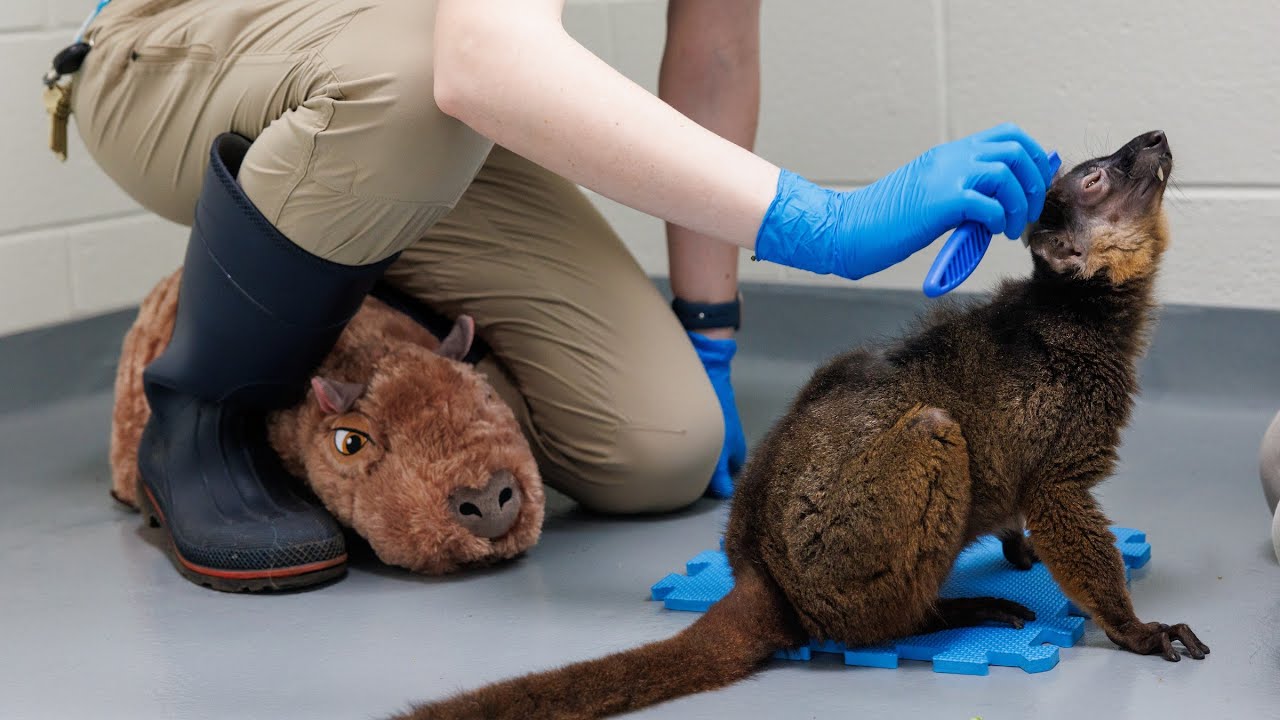– The importance of grooming in lemur social structures and its impact on coping mechanisms
– Strategies for zoo management to facilitate positive grooming behaviors in lemurs experiencing loss
– The role of wildlife conservation efforts in understanding and supporting lemur populations, both in captivity and in the wild
– Educational outreach and its significance in promoting lemur well-being and conservation
Grooming is a critical behavior among lemurs, serving numerous social and physiological functions. It acts as a bonding mechanism, reinforcing group social structures and hierarchies. Additionally, grooming aids in the elimination of parasites, thereby promoting health. Understanding these dynamics is crucial for zoo management and wildlife conservationists to support lemurs, especially in coping with losing a group member. This article explores the multifaceted roles of grooming in lemur societies, the strategies employed by zoological parks to encourage beneficial grooming practices among lemurs, the significance of conservation efforts, and the impact of educational outreach.
Lemurs, native to Madagascar, exhibit a wide range of grooming behaviors essential to their social integration and well-being. Social grooming, in particular, is a pivotal activity through which lemurs maintain and strengthen their social bonds. This behavior becomes especially vital when a lemur experiences the loss of a close companion. In such cases, grooming can provide comfort and ease the stress associated with grief, serving as a form of social support that helps the grieving lemur cope with its loss.
Zoo management is vital in facilitating environments that encourage natural behaviors like grooming. Creating spaces that mimic natural habitats as closely as possible encourages lemurs to engage in typical social interactions, including grooming. Enrichment programs designed to stimulate the lemurs physically and mentally can promote grooming activities. For instance, introducing objects that require group problem-solving can lead to increased physical contact and grooming sessions afterward. Additionally, observing groups to identify individuals becoming isolated can guide interventions, ensuring that all members receive the benefits of social grooming.
Wildlife conservation efforts extend beyond the boundaries of zoos, focusing on preserving lemur populations in the wild. These efforts are crucial for providing a context for zoo-based programs, ensuring they accurately reflect lemurs’ natural behaviors and needs. Conservation programs often include research elements, such as studying lemur behavior in the wild to better understand the nuances of their social structures and grooming habits. Such knowledge can then inform management practices in captivity, ensuring they align with the natural behaviors observed in the wild. Moreover, conservation projects work to protect natural habitats, ensuring that wild populations have the space and resources needed to thrive and exhibit natural behaviors, including grooming.
Educational outreach is critical in the broader strategy to promote lemur well-being and conservation. By educating the public about lemurs, their social behaviors, and the importance of grooming, zoos and conservation organizations can foster a deeper understanding and appreciation for these animals and their needs. Engaging educational programs that highlight the significance of grooming in lemur social life can inspire visitors and supporters to take action in support of lemur conservation efforts, both in captivity and in the wild.
Using grooming to help our lemur cope with loss entails a comprehensive approach, intertwining effective zoo management, informed wildlife conservation practices, and dynamic educational outreach. Understanding the multifaceted role of grooming within lemur societies enables caregivers and conservationists to better support these unique primates during challenging times, such as losing a fellow group member. Through thoughtful enclosure design, enrichment programs, research, and public engagement, strategies for employing grooming as a coping mechanism can substantially impact the well-being of lemurs, highlighting the interconnectedness of zoo management, conservation, and education in fostering healthy, resilient lemur populations.
*****
Source Description
Early this year, the Aquarium lost its female Red-collared Brown Lemur, Jessie, leaving her mate, John, without a companion of his species. Lemurs are highly social animals, and grooming, in particular, is more than just a matter of hygiene but a crucial component of their social interaction.
Until a new companion can be found for John, the Aquarium’s lemur care team has undertaken an experimental training program to let THEM serve as surrogate “lemurs” and groom John to help him cope with his loss and receive the socialization he desperately needs.
#animals #animalcare #mammals #lemurs #loss #grief #grooming #socialinteraction #madagascar #tennesseeaquarium #primates

